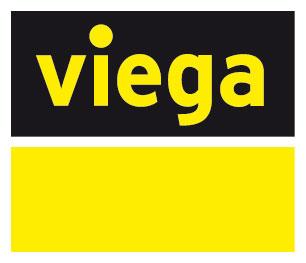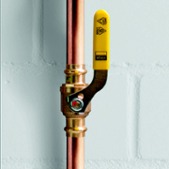It is possible to connect a copper pipe without soldering. Copper has found a home in many types of piping systems, from hot and cold potable water to fire protection systems. While soldering has typically been used to establish connections in these piping systems, this traditional approach leaves some concerns for installers trying to optimize for efficiency. The slow speed of the installation process, the hot work it involves and the use of consumables are just a few of the consistent pain points.
The good news is that soldering is not the only method available to make copper pipe connections. Using a few different examples (and highlighting their pros and cons), we will explain how to connect copper pipe without soldering.
1. Compression Fit Connectors
In compression fit connections, fittings are equipped with an outer nut and an inner ring, referred to as a ferrule, which is typically made of brass or bronze. When the outer nut is tightened with a wrench (with another wrench holding the fitting in place), the force from tightening the nut causes the ferrule to compress against the pipe and create a watertight connection.
While compression connectors save the hassle of hot work permits and fire watches, this method also involves some degree of guesswork in terms of manual tightening. Rather than torquing the joint, there’s a tendency to tighten by experience. When a nut is overly tightened, it will cause the compression nut to crack, leading to failure. On the other hand, a nut that is not tight enough is subject to potential leaks.
What’s more is that even when proper compression connections are made, they are slightly weaker than their soldered counterparts and not as flexible. If the pipe does not go perfectly straight into a fitting for some reason, it will produce a leak path and thus generate future leaks.
2. Push Fit Connectors
In push fit connections, pipe fittings contain a series of metal barbs and a neoprene rubber O-ring. Each fitting is pushed onto a pipe until it bottoms out, with the tight grip of the rubber O-ring around the pipe establishing a watertight connection.
Like compression connectors, push fit connectors eliminate the use of torches and flames that can introduce safety risks and roadblocks to projects. They also require no tools to install and pipes do not have to be completely dry for connections to be made.
However, some issues may arise in the security of these connections. Just a few years ago, Heating Ventilating & Plumbing (HVP) magazine, a leading publication for plumbing and heating installers, released an article about the increase of water claims due to push fit pipes separating under pressure, causing leaks. Such water damage can be attributed back to any number of slight errors in the installation process, whether it’s a single loose connection between the pipe and fitting or removing and reinserting a fitting too many times, causing the O-ring to weaken.
Like their compression fit counterparts, push fit connectors are also subject to leak paths when a pipe does not go perfectly straight into a fitting. For this reason, neither are able to meet a bend requirement that is necessary for some applications like fire sprinklers.
3. Press Fit Connectors
In press fit connections, a battery-powered press tool is used to connect fittings to pipes. With just a single press of a button, the tool clamps the fitting onto the pipe and makes a permanent, leak-proof connection.
Press fit connectors share many of the same benefits as push fit connectors. Their installation requires no heat or flame, and equipment shutdowns are avoided as installation work can be performed even when pipe systems are not completely dry. Not to mention the actual connections are made in a matter of seconds—a much faster turnaround time compared to soldering.
What’s especially unique about press fit connectors is their ability to combine speed and reliability. While other connection techniques leave room for guesswork, press fittings create a consistent and reliable joint every time, curbing the potential for expensive leaks and other issues down the road.
Press fittings can leverage state-of-the-art technology to identify whether unpressed connections are present in pipe systems. One way to identify unpressed connections is through Viega’s Smart Connect® technology. Directly built into ProPress fittings, this feature consistently alerts installers of unpressed connections by allowing water or air to pass the sealing element during system pressure tests.
Ready to learn more about the benefits of using press technology to connect copper pipe? Download your free copy of our eBook, How Viega ProPress Helps You Grow & Succeed in the Market.









